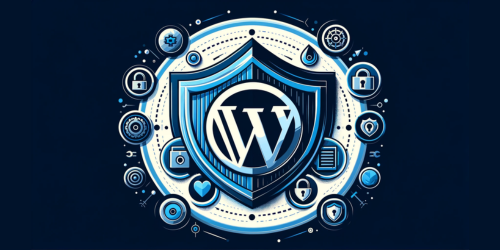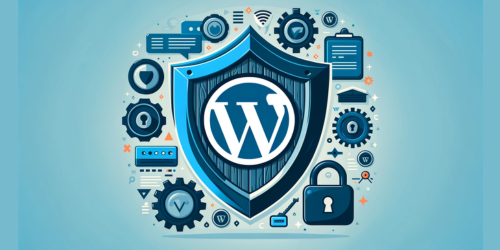LAMP, an acronym for Linux, Apache, MySQL, and PHP, is the technical foundation upon which WordPress stands tall. Think of WordPress as the sleek sports car and LAMP as the high-octane fuel that propels it. Without the robustness of the LAMP Stack, WordPress wouldn’t be able to offer the flexibility, scalability, and performance that millions have come to rely on.
The LAMP Stack is not just a preference; it’s a gold standard. It ensures that your WordPress site runs smoothly, efficiently, and, most importantly, securely.
1. Preliminary Requirements
Before we set the stage for WordPress, there are a few essentials we need to address. First and foremost, ensure you’re running on Ubuntu 20.04 (latest version at the time). This version offers a stable environment, optimized for performance and security.
Next, you’ll want to have a sudo user set up.
Lastly, let’s talk security. An SSL certificate isn’t a luxury; it’s a necessity. It encrypts data, builds trust with your visitors, and even gives you a slight edge in search rankings. For a deeper understanding, check out Why SSL is Important.
3. Setting Up the LAMP Stack
The LAMP Stack, often hailed as the backbone of many web applications, is a powerful combination of four open-source components. Let’s break them down:
- Linux: The operating system that serves as the foundation. It’s like the soil in which everything else grows. Linux is known for its stability and security.
- Apache: The web server software that handles requests and serves web pages. Think of it as the gatekeeper, directing traffic efficiently.
- MySQL: The database management system. It’s the librarian that organizes and retrieves data when needed.
- PHP: The scripting language that brings dynamism to your website. It’s the artist that paints the canvas, making web pages come alive.
Each component of the LAMP Stack plays a pivotal role, ensuring websites are dynamic, secure, and scalable.
4. Database Creation
A dedicated database for WordPress isn’t just a good practice; it’s a cornerstone for efficient website management. By having a dedicated space, you ensure data integrity, faster retrieval, and streamlined backups.
Setting up a MySQL database is straightforward:
- Login: Access MySQL with the command
mysql -u root -p. - Create Database: Use
CREATE DATABASE wordpress_db;replacingwordpress_dbwith your preferred name. - User & Privileges: Assign a user and grant privileges for security.
5. PHP Configuration for WordPress
PHP, the force behind WordPress, requires specific extensions to function at its peak. These extensions enhance performance, compatibility, and security. Key extensions include mysqli, gd, curl, and xml, among others.
When it comes to WordPress plugins, they often have unique PHP configuration needs. For instance, a caching plugin might require adjustments to memory limits, while an image optimizer could need the imagick extension. Always refer to a plugin’s documentation for specific PHP requirements. This ensures smooth operation and avoids potential hiccups down the road.
6. Apache Configuration for WordPress
Apache, the world’s most used web server software, has a few tricks up its sleeve for WordPress optimization. The .htaccess file, allows for directory-level configuration, aiding in security and URL redirection.
Virtual hosts enable hosting multiple sites on a single server. It’s like having different rooms in a house, each with its unique decor. Detailed setup instructions are available at Apache’s virtual host documentation.
Lastly, the mod_rewrite module is a game-changer. It transforms complex URLs into readable, SEO-friendly formats, giving your site an edge in search engine rankings.
7. Downloading and Setting Up WordPress
Staying updated ensures you’re equipped with the latest features, security patches, and optimizations. The official WordPress download page is your starting point, offering the freshest release.
Once downloaded, the next step is deciding where WordPress will reside on your server. This location, often termed the ‘root directory’, is pivotal. It determines your website’s URL structure. For instance, placing WordPress in a directory named ‘blog’ would result in a URL like ‘yourdomain.com/blog’.
Now, let’s touch upon directory permissions. They’re the gatekeepers, determining who can read, write, or execute files. Setting correct permissions is paramount. Too restrictive, and WordPress can’t operate. Too lenient, and you risk security vulnerabilities.
8. WordPress Configuration Adjustments
First on the list are the secret keys. These cryptographic elements bolster security by ensuring better encryption of information stored in user cookies. Once generated, they’re placed in the wp-config.php file, fortifying your site’s defenses.
Next, we address database credentials. Within the same wp-config.php file, you’ll specify the database name, username, and password. This allows WordPress to communicate seamlessly with your MySQL database, fetching and storing data as needed.
Lastly, the filesystem access method. WordPress may need to write files, like when installing plugins or themes. Defining a method, such as ‘FTP’ or ‘Direct’, in wp-config.php ensures WordPress can make these changes without asking for credentials every time.
9. Finalizing WordPress Installation
Once all the pieces are in place, it’s time to bring WordPress to life. Begin by navigating to your domain or IP address in a web browser. This action initiates the famous WordPress installation wizard, a user-friendly interface that guides you through the final steps.
You’ll be prompted to select a language, provide site details, and set up your main administrator account. Once completed, a triumphant message greets you, granting access to the WordPress admin dashboard.
10. Enhancing Your WordPress Site
At the heart of this ecosystem are themes and plugins. Themes dictate your site’s appearance and user experience, while plugins extend functionality, adding features from SEO optimization to e-commerce capabilities. The WordPress Theme Directory and Plugin Repository are treasure troves of these tools.
But with great power comes great responsibility. Regular updates are vital. They not only introduce new features but also patch vulnerabilities, ensuring your site remains a fortress against potential threats.
11. Common Errors and Solutions
A frequent hiccup is the “Error Establishing a Database Connection.” This often stems from incorrect database credentials in the wp-config.php file. Double-checking these details usually resolves the issue.
Another common roadblock is the “White Screen of Death.” This can be traced back to plugin or theme conflicts. A simple remedy is to deactivate plugins one by one, identifying the culprit.
For smooth sailing, always backup before making significant changes and keep an eye on the WordPress Support Forums.
12. FAQs
Q: How to install WordPress using Ubuntu?
To install WordPress on Ubuntu, you can use the LAMP stack (Linux, Apache, MySQL, PHP) and then download and set up the WordPress files.
Q: Can you run WordPress on Ubuntu?
Yes, WordPress can be run on Ubuntu using a web server like Apache or Nginx, along with MySQL and PHP.
Q: How to install WordPress from terminal?
In the terminal, after setting up a LAMP stack, you can download WordPress using wget, extract the files, and then configure the database and WordPress settings.
Q: How to install WordPress on Linux command?
Similar to the terminal method, set up a LAMP or LEMP stack, then download and configure WordPress using Linux commands. Read the installation of WordPress on Linux for better insights.
14. Additional Resources
- Install WordPress on Linux
Explore the nuances of setting up WordPress on a Linux environment, covering all the essential details you need to know. - Uninstall WordPress on Ubuntu
A step-by-step tutorial on how to safely and effectively uninstall WordPress from your Ubuntu system.



